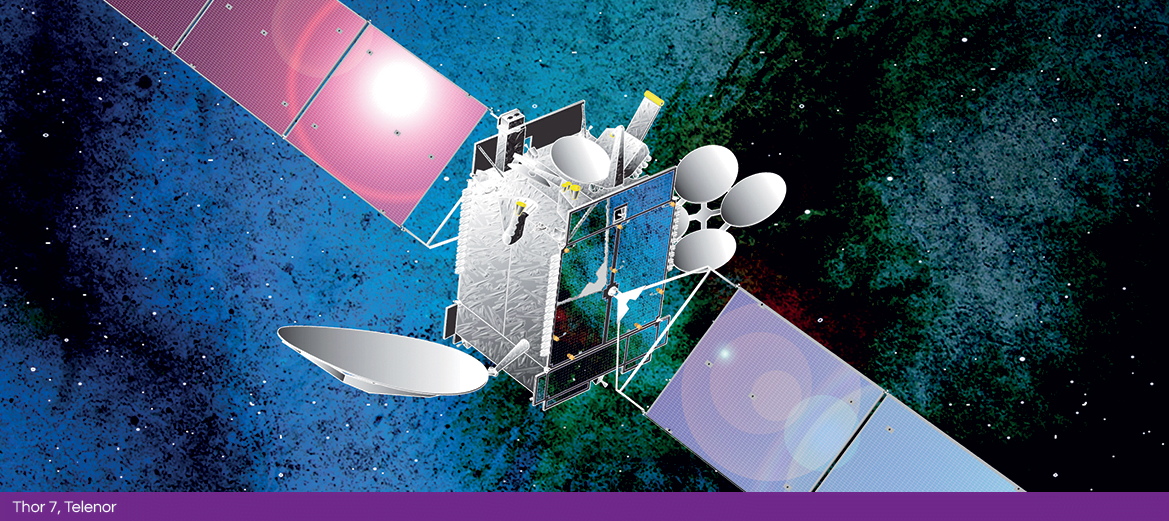The Norwegians are pursuing enhanced satellite coverage for Arctic defense and security.
In a press release issued last year on March 23, 2018, the requirement was identified.
Today, broadband coverage in the High North is poor and unstable. The Government now wants Norwegian satellites to make broadband communications available in the Arctic.
“Fast, stable internet is important to anyone operating in the High North, whether in shipping, defence, fisheries or research,” says Minister of Trade and Industry Torbjørn Røe Isaksen (Conservative Party).
Space Norway AS has been working to establish satellite-based broadband communications capacity in the High North since 2015. Space Norway’s project is based on a system of two satellites providing coverage 24 hours a day in the area north of 65 degrees N latitude. The expected lifespan of the satellites is 15 years. If all goes according to plan, the satellites will be launched in 2022.
For negotiations to proceed with customers, suppliers and banks, the company needs a promise that the Norwegian state will contribute, in its capacity as owner, about NOK 1 billion in equity capital if the company manages to negotiate good agreements.
The Government is therefore proposing a conditional pledge to Space Norway AS of about NOK 1 billion in equity capital to realise this project. This means the state will contribute equity if Space Norway lands agreements ensuring, among other things, the project’s commercial profitability. In addition, the customers must bear market risk by securing project income across the lifespan of the satellites.
“Space Norway AS’s project represents an exciting opportunity to meet society’s needs for broadband communications at low cost to the state. A solid communications system will also facilitate increased value creation in the High North,” says Røe Isaksen.
Minister of Foreign Affairs Ine Eriksen Søreide (Conservative Party) added: “The High North is Norway’s most important strategic area of responsibility. It is quite natural that we take a leading role in establishing better communications in the region.”
Poor coverage in the High North makes it harder for the authorities to carry out security and emergency services such as search and rescue at sea, oil spill protection and crisis management. Not least, the Armed Forces requires stable and secure communications for operations in Norwegian waters.
“Space Norway’s project is important to the Norwegian Armed Forces, and can also serve the needs of our allies,” says Minister of Defence Frank Bakke-Jensen (Conservative Party).
Progress was highlighted at the recent Space Symposium held in Colorado Springs.
In an article by Caleb Henry published on April 10, 2019 by Space News, Space Norway highlighted that it was in the final stages of procuring the satellite capacity it sought.
Stig Nilsson, a colonel in the Norwegian Ministry of Defence’s Department for Defence Policy and Long Term Planning, said the satellite system, known as the Arctic Satellite Broadband Mission (ASBM), should be under construction by June, following a downselect among competing manufacturers.
“Our requirement has always been clear that we need to have satcom in the north,” Nilsson said during a panel at the 35th Space Symposium here. “It’s just a manner of finding the right way to achieve it. We think this is the quickest and most realistic way of doing it.”
Nilsson said the Norwegian MoD concluded that a pure military satellite would be too expensive an undertaking for the country, whose population numbers about 5.3 million in an area slightly larger than New Mexico. To keep costs low, the ASBM constellation will carry military payloads for the U.S. Defense Department and the Norwegian MoD, and commercial capacity for Space Norway, he said.
In an interview, Nilsson said those three partners are finalizing the cost sharing structure so the program can proceed.
“When we see the bill for what the project will cost, not just for investment but for the 15-year lifespan, then we at least have established the principles of how we are going to share the cost,” he said.
Space Norway is leading satellite procurement talks with manufacturers, Nilsson said. The competition initially included European and American manufacturers, but has narrowed to two U.S. vendors, he said.
Nilsson said the goal is to have both satellites in orbit and operational by the second half of 2023.


